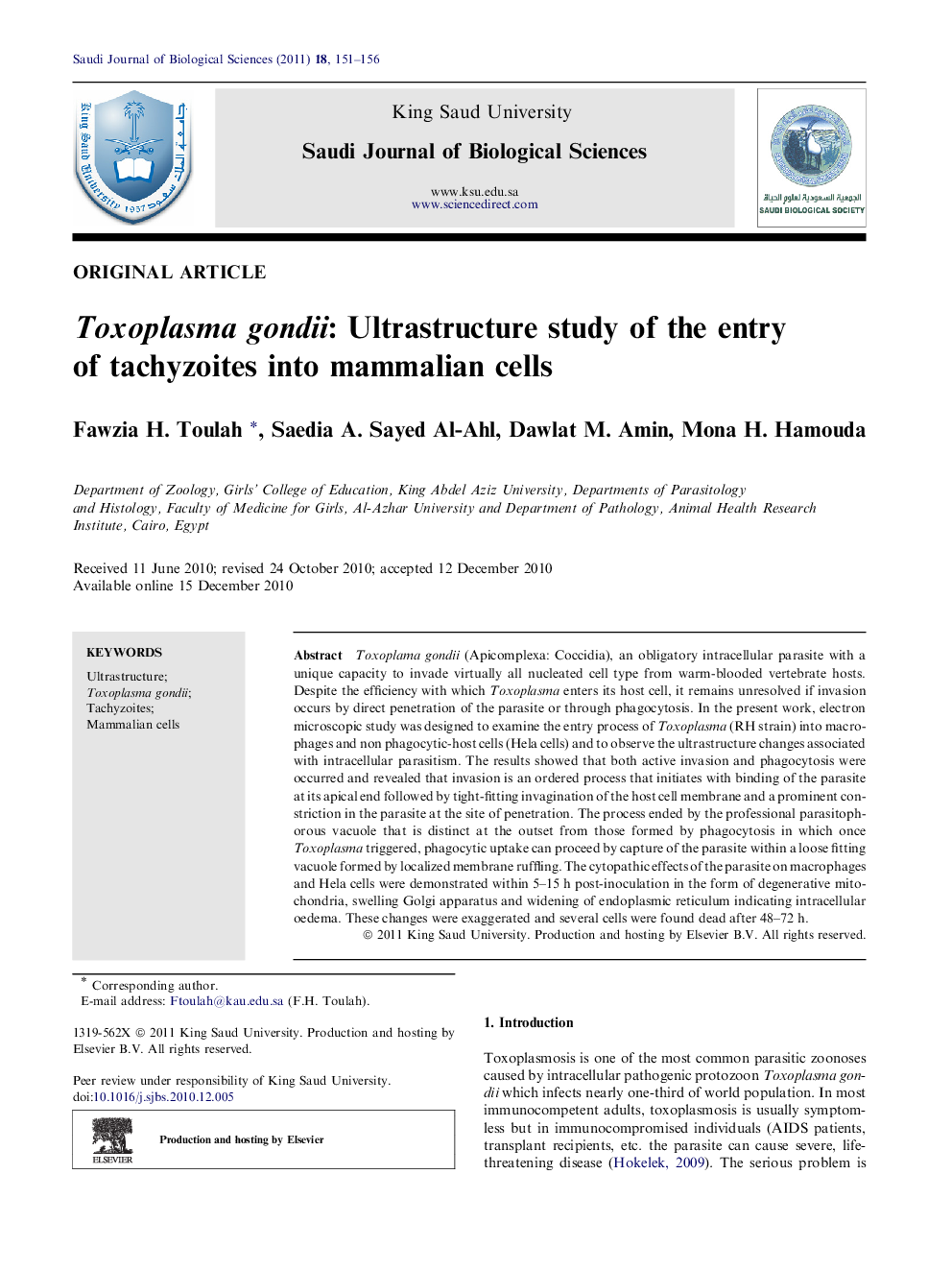| Article ID | Journal | Published Year | Pages | File Type |
|---|---|---|---|---|
| 4406655 | Saudi Journal of Biological Sciences | 2011 | 6 Pages |
Toxoplama gondii (Apicomplexa: Coccidia), an obligatory intracellular parasite with a unique capacity to invade virtually all nucleated cell type from warm-blooded vertebrate hosts. Despite the efficiency with which Toxoplasma enters its host cell, it remains unresolved if invasion occurs by direct penetration of the parasite or through phagocytosis. In the present work, electron microscopic study was designed to examine the entry process of Toxoplasma (RH strain) into macrophages and non phagocytic-host cells (Hela cells) and to observe the ultrastructure changes associated with intracellular parasitism. The results showed that both active invasion and phagocytosis were occurred and revealed that invasion is an ordered process that initiates with binding of the parasite at its apical end followed by tight-fitting invagination of the host cell membrane and a prominent constriction in the parasite at the site of penetration. The process ended by the professional parasitophorous vacuole that is distinct at the outset from those formed by phagocytosis in which once Toxoplasma triggered, phagocytic uptake can proceed by capture of the parasite within a loose fitting vacuole formed by localized membrane ruffling. The cytopathic effects of the parasite on macrophages and Hela cells were demonstrated within 5–15 h post-inoculation in the form of degenerative mitochondria, swelling Golgi apparatus and widening of endoplasmic reticulum indicating intracellular oedema. These changes were exaggerated and several cells were found dead after 48–72 h.
